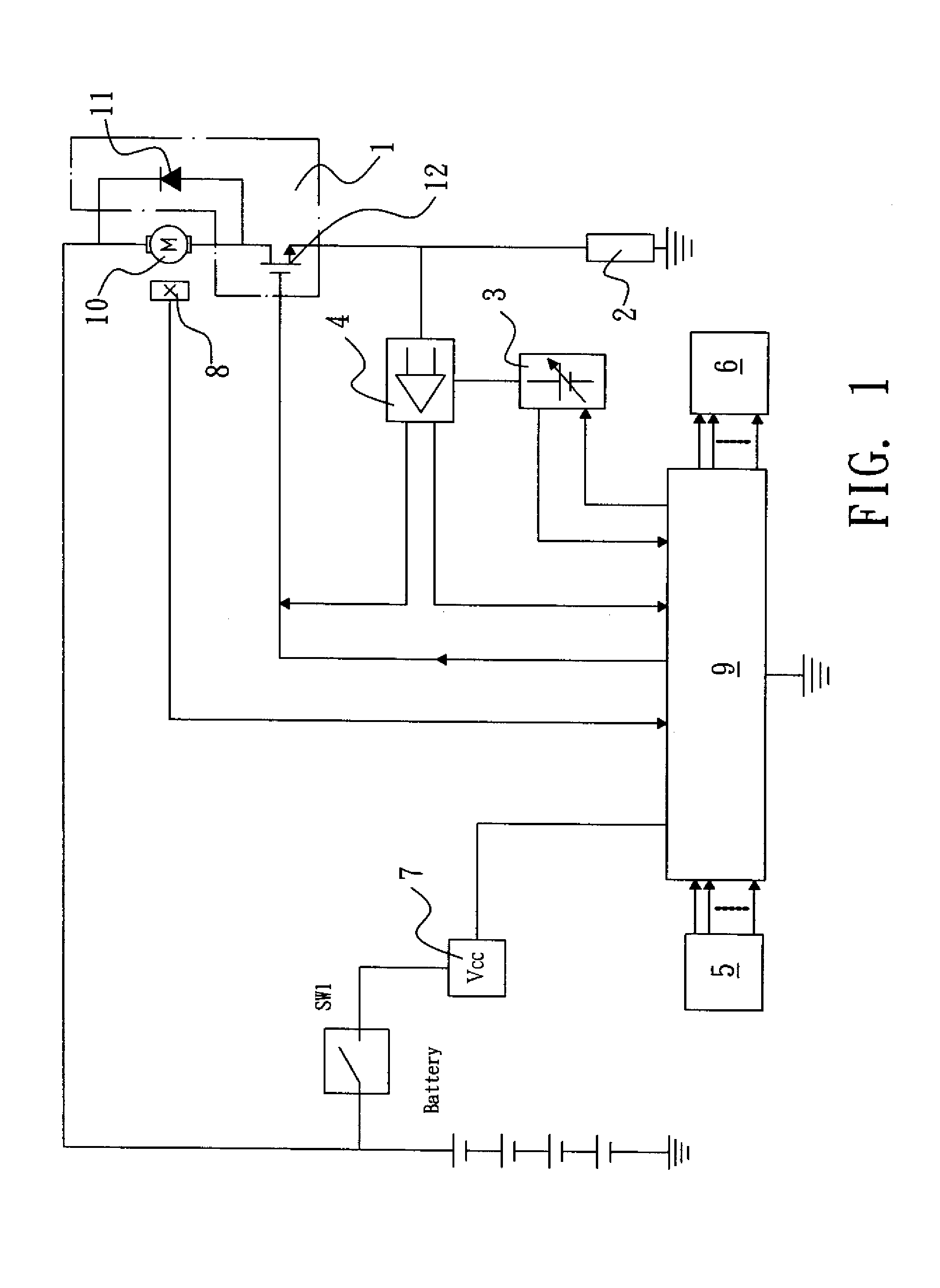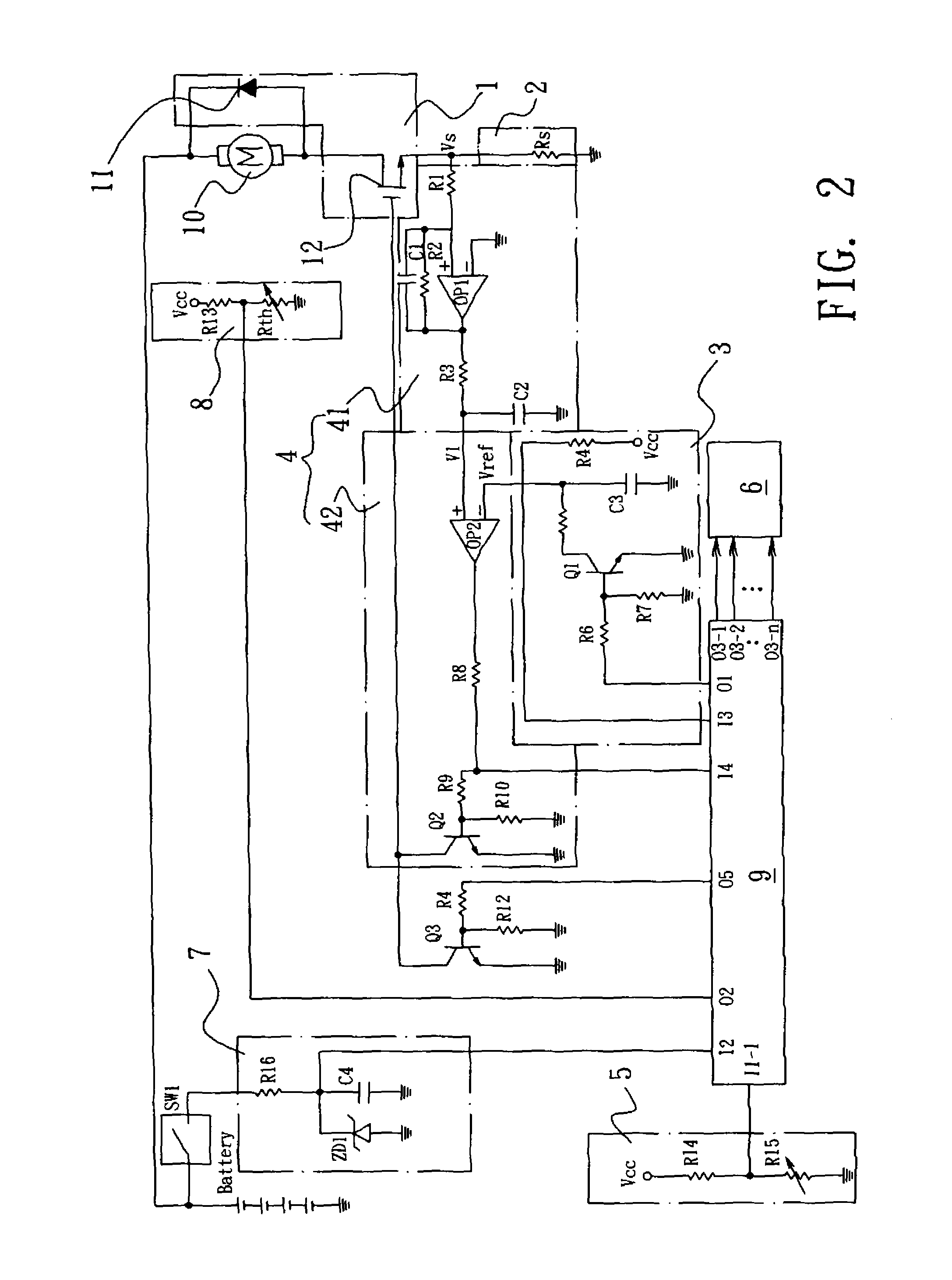Torque control circuit for impact tool
a technology of torque control circuit and impact tool, which is applied in the direction of electric variable regulation, process and machine control, instruments, etc., can solve the problems of high speed rotation fast consumption of electric power, and achieve the reduction of battery capacity, torque setting range, and output voltage
- Summary
- Abstract
- Description
- Claims
- Application Information
AI Technical Summary
Benefits of technology
Problems solved by technology
Method used
Image
Examples
Embodiment Construction
[0023]The following descriptions are of exemplary embodiments only, and are not intended to limit the scope, applicability or configuration of the invention in any way. Rather, the following description provides a convenient illustration for implementing exemplary embodiments of the invention. Various changes to the described embodiments may be made in the function and arrangement of the elements described without departing from the scope of the invention as set forth in the appended claims.
[0024]FIG. 1 is a block diagram illustrating the construction and signal transmission of a torque control circuit for impact tool in accordance with the present invention. As shown in the drawing, the torque control and battery discharge protection circuit for impact tool in accordance with the present invention is generally comprised of an electric motor driving circuit 1, an electric motor operating current detection circuit 2, a reference voltage generation circuit 3, a maximum electric motor ...
PUM
 Login to View More
Login to View More Abstract
Description
Claims
Application Information
 Login to View More
Login to View More - R&D
- Intellectual Property
- Life Sciences
- Materials
- Tech Scout
- Unparalleled Data Quality
- Higher Quality Content
- 60% Fewer Hallucinations
Browse by: Latest US Patents, China's latest patents, Technical Efficacy Thesaurus, Application Domain, Technology Topic, Popular Technical Reports.
© 2025 PatSnap. All rights reserved.Legal|Privacy policy|Modern Slavery Act Transparency Statement|Sitemap|About US| Contact US: help@patsnap.com



